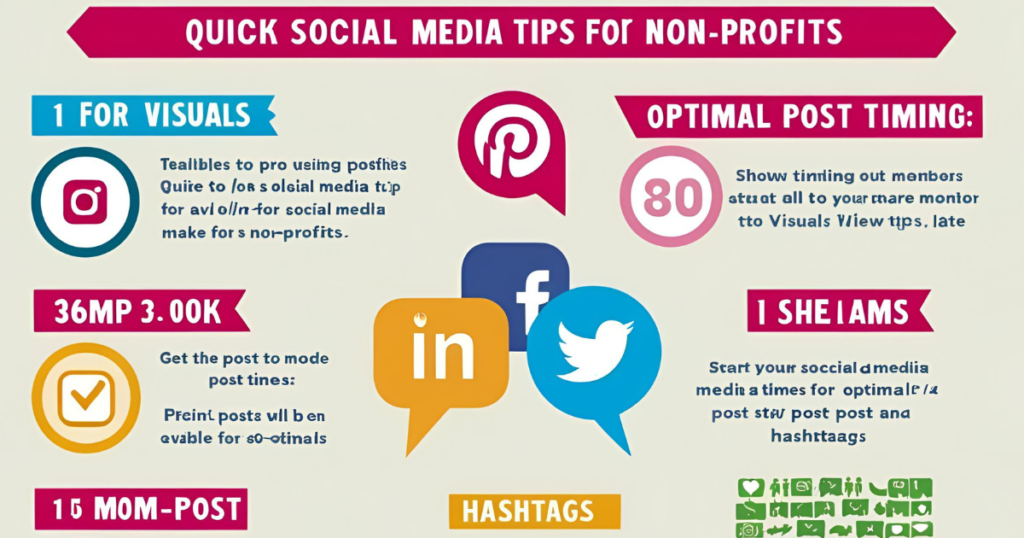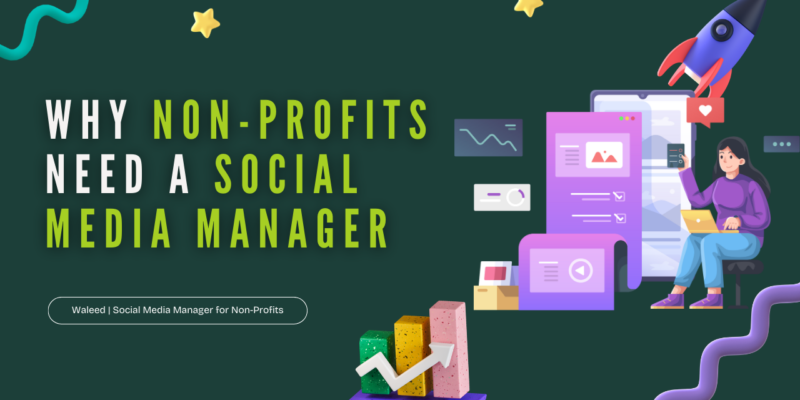Why Every Non Profit Needs a Social Media Manager?
In today’s digital-first world, social media has become a powerful tool for non profit organizations. Platforms like Facebook, Instagram, and Twitter offer unparalleled opportunities to connect with supporters, share impactful stories, and drive meaningful change. However, effectively leveraging these platforms requires more than occasional posts—it demands strategy, consistency, and expertise. That’s where a dedicated social media manager for non profits becomes invaluable.
The Role of a Social Media Manager in Non Profits
Developing and Implementing Social Media Strategies
A non profit social media manager crafts tailored strategies that align with the organization’s mission and goals. This involves:
Identifying the Right Platforms: Selecting the most effective platforms for outreach based on audience demographics.
Setting Measurable Objectives: Goals like increasing followers, engagement, or donations.
Creating a Content Calendar: Maintaining a consistent posting schedule. Download our free social media content calendar template for non profits here.
Creating and Curating Engaging Content
High-quality content is the backbone of a successful social media presence. A social media manager:
Produces visually appealing graphics, videos, and posts.
Shares inspiring stories about beneficiaries and the organization’s impact.
Curates relevant third-party content to keep the audience informed and engaged.

Managing Multiple Social Media Platforms
Non profits often juggle several platforms, each with unique content needs. A social media manager ensures:
Consistent Branding: Across all platforms.
Engagement and Responsiveness: Timely responses to comments and messages.
Platform-Specific Optimization: Tailoring posts to each platform’s algorithms and audience preferences.
Analyzing Metrics and Adjusting Strategies
Data-driven decisions are essential for success. A social media manager:
Monitors Key Performance Indicators (KPIs): Reach, engagement, and conversion rates.
Conducts A/B Testing: To determine what resonates best.
Refines Strategies: Based on data insights to maximize impact.
Potential Challenges and Solutions in Social Media Management for Non Profits
Challenge 1: Limited Budget
Challenge 2: Time Constraints
Solution: Use content calendars to plan posts in advance and prioritize high-impact content.
Challenge 3: Platform Changes
Solution: Stay updated on platform algorithm updates and trends by subscribing to social media newsletters.
Challenge 4: Audience Engagement
Solution: Conduct polls, host live Q&A sessions, and share authentic stories to foster interaction.

Quick Tips for Social Media Success
Use high-quality visuals to grab attention.
Post at optimal times for your audience.
Engage with followers through polls and Q&A sessions.
Share behind-the-scenes content for authenticity.
Collaborate with influencers or partners to amplify your reach.

Real-World Examples
Case Study 1: Charity: Water
Shares compelling stories and high-quality visuals.
Achieves millions of followers with a dedicated social media team.
Case Study 2: World Wildlife Fund (WWF)
Engages followers with actionable posts about wildlife conservation.
Campaigns like #EarthHour gain global traction.
Case Study 3: Feeding America
Uses data-driven strategies for increased donations and awareness.
Interactive Quiz: Are You Ready to Hire a Social Media Manager?
Question 1: Does your non profit struggle with consistent posting?
Question 2: Do you lack the expertise to analyze social media metrics?
Question 3: Are your current campaigns underperforming?
If you answered “Yes” to any of these questions, it’s time to consider hiring a social media manager.
Conclusion
The importance of social media for non profits cannot be overstated. A dedicated social media manager brings expertise, creativity, and strategy, driving visibility, engagement, and support. If your organization is ready to elevate its online presence, download the free content calendar and start building your strategy today!
Why is social media important for non profits?
Social media is essential for non profits because it provides a cost-effective way to reach a broad audience, share impactful stories, engage with supporters, and drive donations. It helps build a community around the organization’s mission and amplify its message globally.
What does a social media manager do for a non profit organization?
A social media manager handles tasks like creating and implementing social media strategies, managing multiple platforms, producing and curating content, analyzing performance metrics, and fostering community engagement. They ensure consistent branding and maximize the organization’s online impact.
How can non profits afford a social media manager on a tight budget?
Non profits can explore part-time or freelance options, apply for grants or partnerships to fund the role, and use free or affordable tools like Canva, Hootsuite, or Buffer to assist with content creation and scheduling. They can also hire interns or volunteers with social media expertise.
What are some key skills to look for when hiring a social media manager?
Look for candidates with:
Proficiency in graphic design and video editing tools.
Strong storytelling and writing abilities.
Experience with analytics and understanding of platform algorithms.
Strategic planning skills and familiarity with non profit fundraising.
How do social media managers help improve fundraising for non profits?
Social media managers create compelling campaigns, strategically promote donation links, and utilize platform-specific tools like Facebook Fundraisers. By engaging the audience with emotional and impactful stories, they inspire followers to donate and share the campaigns widely.
What challenges do non profits face in managing social media, and how can they overcome them?
Common challenges include:
Limited Budget: Use free tools and seek partnerships.
Time Constraints: Plan content in advance with a content calendar.
Platform Changes: Stay updated on trends and algorithm updates.
Low Engagement: Post interactive content like polls and live sessions.
What are some tools non profits can use for social media management?
How can a social media content calendar help non profits?
A content calendar helps plan and organize posts in advance, ensuring consistency and alignment with the organization’s goals. It saves time, improves content quality, and helps maintain a regular posting schedule. Download a free content calendar template here.
What metrics should a non profit track to evaluate social media success?
Key performance indicators (KPIs) include:
Engagement Rate: Likes, comments, shares, and messages.
Reach and Impressions: How many people see the content.
Conversion Rates: Donations, sign-ups, or event registrations.
Follower Growth: Increase in audience size over time.




